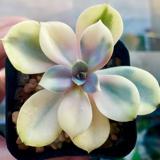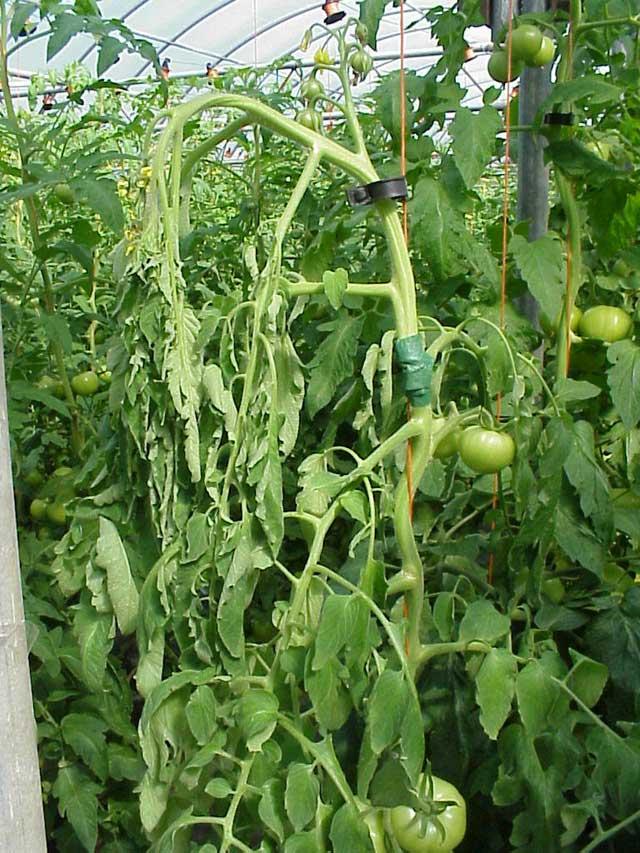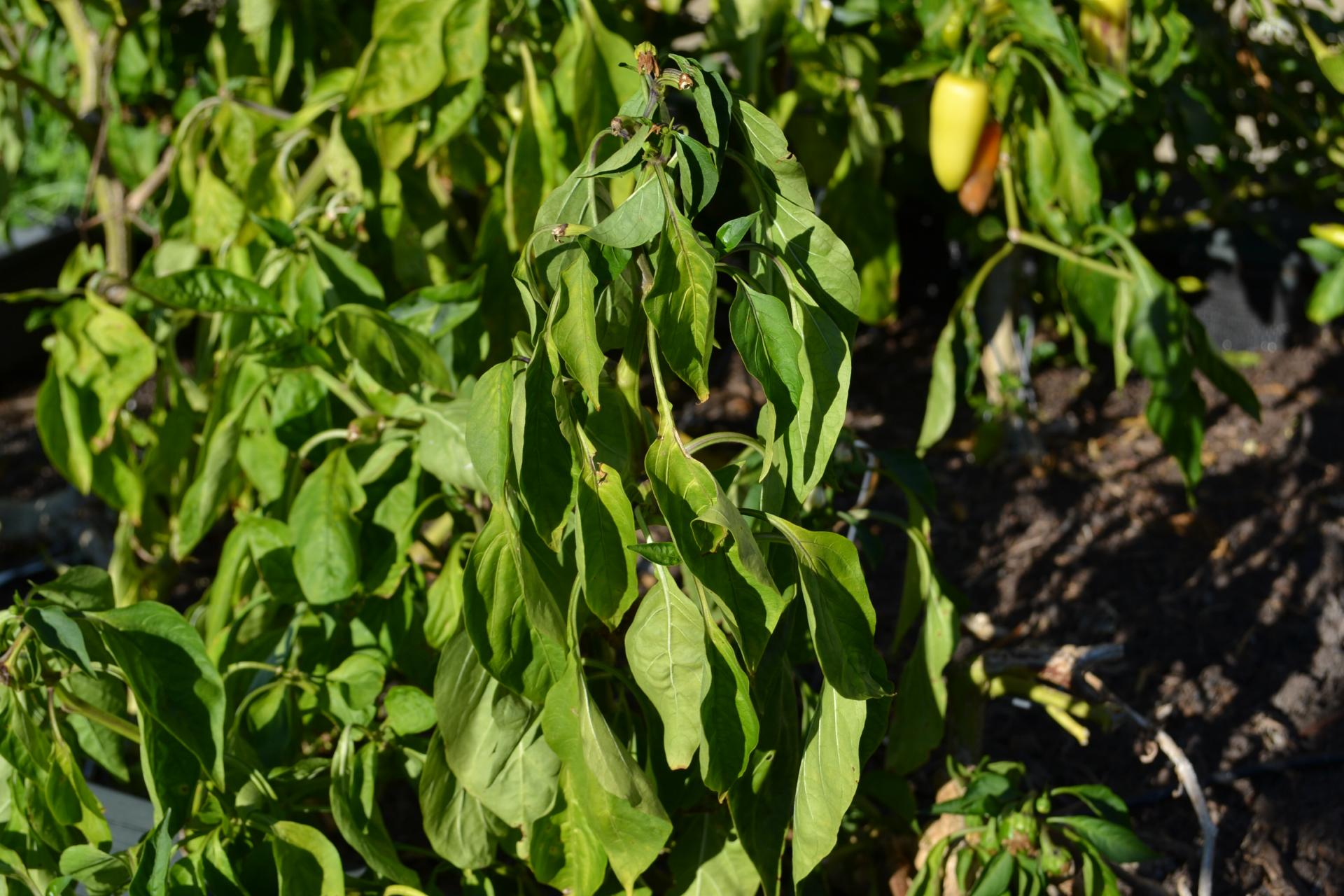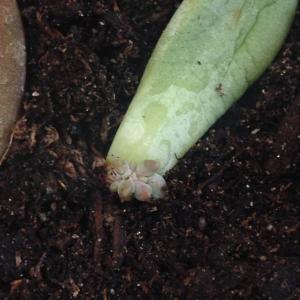成长记
greenwhalepinkshark
2017年09月15日

I new added a "Sempervivum "hens and chicks"" in my "garden"


2
0
成长记
greenwhalepinkshark
2017年09月15日

I new added a "Graptopetalum paraguayense twins!" in my "garden"


2
0
文章
Dummer. ゛☀
2017年09月15日

Wilting plant leaves, sagging stems, and aborting flowers and fruits. Dry soil, especially where new plants have not had a chance to put down deep roots. Dry compost in pots and hanging baskets, and pots blowing over.
Plants affected
All plants are affected.
About Wilting through lack of water
Plants have a vascular system which enables water and nutrients to be taken from the environment through a complex root system.
The continual flow of water and nutrients ensures that the vascular system remains firm, and that the plant continues to grow in a healthy way.
Lack of water results in a loss of firmness which causes the symptoms of wilting.
Plants respond to lack of water by closing down areas of the vascular system, which consequently results in leaf, flower and fruit loss.
Plants can usually recover from short periods of lack of water, but sustained periods of drought often result in death.
Treatment
Chemical
Products containing the following chemical ingredients are all effective on Wilting through lack of water
There is no chemical control available for this problem.
Note: It is important to read manufacturer's instructions for use and the associated safety data information before applying chemical treatments.
Organic
Water wilted plants as soon as possible.
Plunge pots with very wilted plants into a bucket of water for an hour or so.
After plunging or watering, place pots with wilted plants in the shade to recover, and consider moving them to a shady spot permanently.
Move wilted plants out of windy spots, and avoid putting them back in the same place.
If the problem is affecting plants in the greenhouse, after watering them, damp down the floor with a hose or watering can.
Prevention
Regularly monitor plants for wilting symptoms.
Design a watering schedule for plants based on their individual needs. As a general guide, pots need watering once a day, hanging baskets twice a day, new plants in the border need careful monitoring in their first year and will probably need watering two or three times a week. Established border plants will have deeper roots and will benefit most from one long drink each week rather than a daily dose.
For potted and hanging basket plants, water-retaining gel granules can be used in the compost.
The base of the pot or basket can also be lined with a plastic bag to help retain water. If lining a pot, make a few small holes in the bag with a kitchen fork so the compost does not get waterlogged.
Avoid planting delicate plants in locations of intense sunlight, or strong winds.
During summer use shading to protect greenhouse crops.
Incorporating mulch and organic material into the soil improves its water retention.

Plants affected
All plants are affected.
About Wilting through lack of water
Plants have a vascular system which enables water and nutrients to be taken from the environment through a complex root system.
The continual flow of water and nutrients ensures that the vascular system remains firm, and that the plant continues to grow in a healthy way.
Lack of water results in a loss of firmness which causes the symptoms of wilting.
Plants respond to lack of water by closing down areas of the vascular system, which consequently results in leaf, flower and fruit loss.
Plants can usually recover from short periods of lack of water, but sustained periods of drought often result in death.

Treatment
Chemical
Products containing the following chemical ingredients are all effective on Wilting through lack of water
There is no chemical control available for this problem.
Note: It is important to read manufacturer's instructions for use and the associated safety data information before applying chemical treatments.
Organic
Water wilted plants as soon as possible.
Plunge pots with very wilted plants into a bucket of water for an hour or so.
After plunging or watering, place pots with wilted plants in the shade to recover, and consider moving them to a shady spot permanently.
Move wilted plants out of windy spots, and avoid putting them back in the same place.

If the problem is affecting plants in the greenhouse, after watering them, damp down the floor with a hose or watering can.
Prevention
Regularly monitor plants for wilting symptoms.
Design a watering schedule for plants based on their individual needs. As a general guide, pots need watering once a day, hanging baskets twice a day, new plants in the border need careful monitoring in their first year and will probably need watering two or three times a week. Established border plants will have deeper roots and will benefit most from one long drink each week rather than a daily dose.
For potted and hanging basket plants, water-retaining gel granules can be used in the compost.

The base of the pot or basket can also be lined with a plastic bag to help retain water. If lining a pot, make a few small holes in the bag with a kitchen fork so the compost does not get waterlogged.
Avoid planting delicate plants in locations of intense sunlight, or strong winds.

During summer use shading to protect greenhouse crops.
Incorporating mulch and organic material into the soil improves its water retention.
0
0
文章
Dummer. ゛☀
2017年09月15日

Small silver patches and black dots on the leaves. Feeding thrips can also turn petals on flowers brown. New growth can be distorted, browning and curled.
Plants affected
Virtually all garden plants can be affected, from ornamental species, to fruit, vegetable, and cereal crops. Flowers and leaves of plants are most affected.
About Thrips
Thrips are sometimes known as thunderflies or thunderbugs.
There are over 3000 recorded species worldwide, with over 150 in the UK.
They are typically small, slender, dark-coloured insects about 2mm long or less and usually have two pairs of feather-like wings.
Thrips rasp through upper leaf cells to feed on plant sap, causing a silvering appearance.
Thrip droppings are minute black specks on the leaves.
Thrips have six lifecycle stages including egg, larvae, pupa and adult.
Larvae and pupae can be a lighter colour than adults.
Females have a serrated tube for laying eggs into plant tissue.
They are predominantly a summer pest, favouring warm temperatures and dry conditions.
Thundery conditions trigger swarming.
Some species can transmit viruses such as tomato spotted wilt virus.
Treatment
Chemical
Products containing the following chemical ingredients are all effective on Thrips
Pyrethrins
Methiocarb
Note: It is important to read manufacturer's instructions for use and the associated safety data information before applying chemical treatments.
Organic
Release the predatory mite Amblyseius cucumeris, and predatory bug Orius laevigatus.
Spray organic plant oils approved for use on plants.
Remove and destroy infested leaves, particularly silvery areas where eggs are present.
Prevention
Thoroughly clean greenhouses at the end of the season to remove any over-wintering thrips.
Use sticky traps to monitor the first appearance of thrips. Blue coloured traps are thought to be more effective than other colours.
Netting and fleeces can be used as a barrier between plants.

Plants affected
Virtually all garden plants can be affected, from ornamental species, to fruit, vegetable, and cereal crops. Flowers and leaves of plants are most affected.
About Thrips
Thrips are sometimes known as thunderflies or thunderbugs.
There are over 3000 recorded species worldwide, with over 150 in the UK.
They are typically small, slender, dark-coloured insects about 2mm long or less and usually have two pairs of feather-like wings.
Thrips rasp through upper leaf cells to feed on plant sap, causing a silvering appearance.
Thrip droppings are minute black specks on the leaves.

Thrips have six lifecycle stages including egg, larvae, pupa and adult.
Larvae and pupae can be a lighter colour than adults.
Females have a serrated tube for laying eggs into plant tissue.
They are predominantly a summer pest, favouring warm temperatures and dry conditions.
Thundery conditions trigger swarming.
Some species can transmit viruses such as tomato spotted wilt virus.
Treatment
Chemical
Products containing the following chemical ingredients are all effective on Thrips

Pyrethrins
Methiocarb
Note: It is important to read manufacturer's instructions for use and the associated safety data information before applying chemical treatments.
Organic
Release the predatory mite Amblyseius cucumeris, and predatory bug Orius laevigatus.
Spray organic plant oils approved for use on plants.
Remove and destroy infested leaves, particularly silvery areas where eggs are present.

Prevention
Thoroughly clean greenhouses at the end of the season to remove any over-wintering thrips.
Use sticky traps to monitor the first appearance of thrips. Blue coloured traps are thought to be more effective than other colours.
Netting and fleeces can be used as a barrier between plants.
0
0
文章
Dummer. ゛☀
2017年09月15日

If the shoots tips of rosemary and lavender are turning brown and dying back it could be the sign of an infestation of rosemary leaf beetle. These small beetles feed on the new shoot tips causing them to die back. They're easy to spot because they have metallic green and purple stripes across their backs. Their larvae, which are slug-like and pale grey in colour with a dark stripe down the side, also cause damage by feeding on the shoots as they grow.
Plants affected
Rosemary leaf beetles only feed on a small number of plant species which includes rosemary, lavender, sage and thyme.
About Rosemary leaf beetle
These attractive leaf beetles are an invasive species that first appeared in the UK in 1994.
Since their introduction, they've been spreading steadily throughout the southern counties of England.
The adult beetles are around 1cm long with metallic green and purple stripes down their wing cases.
They're usually found in groups on stems, or feeding on the new growth of plants.
The larvae are small slug-like grubs which are usually found on the underside of leaves. They are light grey with horizontal dark stripes along their body.
Adult beetles are usually first seen in late spring, although they remain largely stationary on plants until later in the year.
In late summer they'll begin to mate and lay eggs.
Eggs are usually laid on the underside of leaves and are around 2mm in length.
Larvae will hatch in about ten day's time and feed for a few weeks before dropping down to pupate below the soil surface.
Adults may continue to mate during warmer winter periods, although this is rare.
Treatment
Chemical
Products containing the following chemical ingredients are all effective on Rosemary leaf beetle
Pyrethrum
Natural fatty acids
Surfactant-based products
Note: It is important to read manufacturer's instructions for use and the associated safety data information before applying chemical treatments.
Organic
Regular observation in late spring each year is essential to prevent infestations establishing.
Removing adults and larvae by hand will help to reduce numbers. Shaking infested bushes over an old towel or sheet will enable large infestations to be collected and removed.
Netting and fleeces can be used to stop adults moving between plants.
There are currently no natural enemies commercially available to control rosemary leaf beetle.
Prevention
Check plants on a weekly basis for signs of infestation and deal with them as soon as they appear.
Encourage insectivorous birds by hanging feeders in the winter and provide nesting boxes in the spring.

Plants affected
Rosemary leaf beetles only feed on a small number of plant species which includes rosemary, lavender, sage and thyme.
About Rosemary leaf beetle
These attractive leaf beetles are an invasive species that first appeared in the UK in 1994.
Since their introduction, they've been spreading steadily throughout the southern counties of England.
The adult beetles are around 1cm long with metallic green and purple stripes down their wing cases.
They're usually found in groups on stems, or feeding on the new growth of plants.

The larvae are small slug-like grubs which are usually found on the underside of leaves. They are light grey with horizontal dark stripes along their body.
Adult beetles are usually first seen in late spring, although they remain largely stationary on plants until later in the year.
In late summer they'll begin to mate and lay eggs.
Eggs are usually laid on the underside of leaves and are around 2mm in length.
Larvae will hatch in about ten day's time and feed for a few weeks before dropping down to pupate below the soil surface.
Adults may continue to mate during warmer winter periods, although this is rare.

Treatment
Chemical
Products containing the following chemical ingredients are all effective on Rosemary leaf beetle
Pyrethrum
Natural fatty acids
Surfactant-based products
Note: It is important to read manufacturer's instructions for use and the associated safety data information before applying chemical treatments.
Organic
Regular observation in late spring each year is essential to prevent infestations establishing.
Removing adults and larvae by hand will help to reduce numbers. Shaking infested bushes over an old towel or sheet will enable large infestations to be collected and removed.

Netting and fleeces can be used to stop adults moving between plants.
There are currently no natural enemies commercially available to control rosemary leaf beetle.
Prevention
Check plants on a weekly basis for signs of infestation and deal with them as soon as they appear.
Encourage insectivorous birds by hanging feeders in the winter and provide nesting boxes in the spring.
0
0















